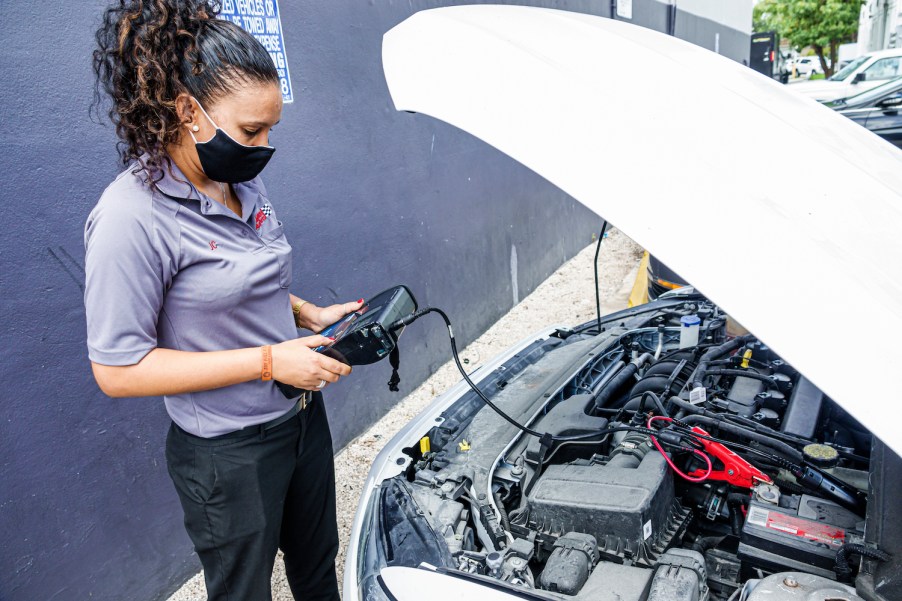
How To Change A Car Battery
Few car maintenance nightmares are as bad as trying to start your car and finding the battery has died. It is hard to know what to do if your car battery dies. Luckily, you can change a car battery on your own with simple hand tools. In addition, many auto parts stores will test your old battery for free and include installation in the cost of a new battery.
Tools needed:
- Wrenches or sockets to disconnect battery fasteners
- Wrenches or sockets to disconnect battery clamps
- Battery cleaning solution
Can you change a car battery yourself?

Is your car not holding a charge? Is it difficult to start or not starting at all? Firstly, you need to establish whether your vehicle’s battery needs replacing. It’s a common myth that if a car won’t start, the battery is to blame. Sometimes when a component such as your alternator fails, it may seem like your battery is junk.
An experienced mechanic can quickly test your battery and electrical system. In addition, many auto parts stores offer battery tests for free. If you do need a new battery, you can change a car battery yourself. It is a quick job that only requires simple hand tools. But you may not need to.
Most car batteries cost $50 to $120. However, some specialty batteries cost as much as $200. Many auto parts stores include the installation of your new battery in the cost of the new battery. Call ahead to find out your local store’s policy. If you are uncomfortable changing a car battery yourself, you probably will not have to.
Is it easy to change a battery in a car?

Changing a battery is one of the easier automotive maintenance tasks to do yourself. You will need a couple of simple hand tools such as wrenches. The size wrench or socket you need depends on your car. Check your maintenance manual for directions. You can also search the make and model of your vehicle on Google or Youtube to find out.
Every automaker fastens each vehicle’s battery in place in the engine compartment. Some automakers use a bracket on top of the battery. Others use a clamp to hold the battery’s base in place.
Before you begin, make sure you have the correct wrenches or sockets to free up the battery clamps as well as the fasteners. Getting halfway through a job and finding you do not have the right tools to finish can be frustrating.
Which battery terminal do you take off first?

Disconnect the negative terminal of the dead battery first. A minus (-) sign on the battery’s surface marks this terminal. The negative terminal wire is also often colored black.
Most battery clamps tighten around the battery terminal and are held fast by a nut and a bolt. Use your tools to loosen this nut and bolt until you can slide the clamp off the negative terminal.
Once you have disconnected your negative terminal, begin on the positive terminal. A plus (+) sign marks the positive terminal. The wire connecting to the positive terminal is often colored red. While disconnecting the positive terminal, be cautious of bridging a metal tool between the battery clamp and any metal in the engine compartment. If you do, you will create some sparks but will probably not feel a shock.
Once you have disconnected the fasteners holding the batter in place, lift it out of the engine compartment. If you have battery cleaning solution, now is the time to clean any corrosion off the battery clamps or the battery tray.
Be careful to line the new battery’s positive and negative terminals up with the correct wires. Reconnect the positive wire first, then connect the negative wire. This is the same connection order as jumpstarting a dead battery. Once your battery is fastened in place, you are ready to roll.



